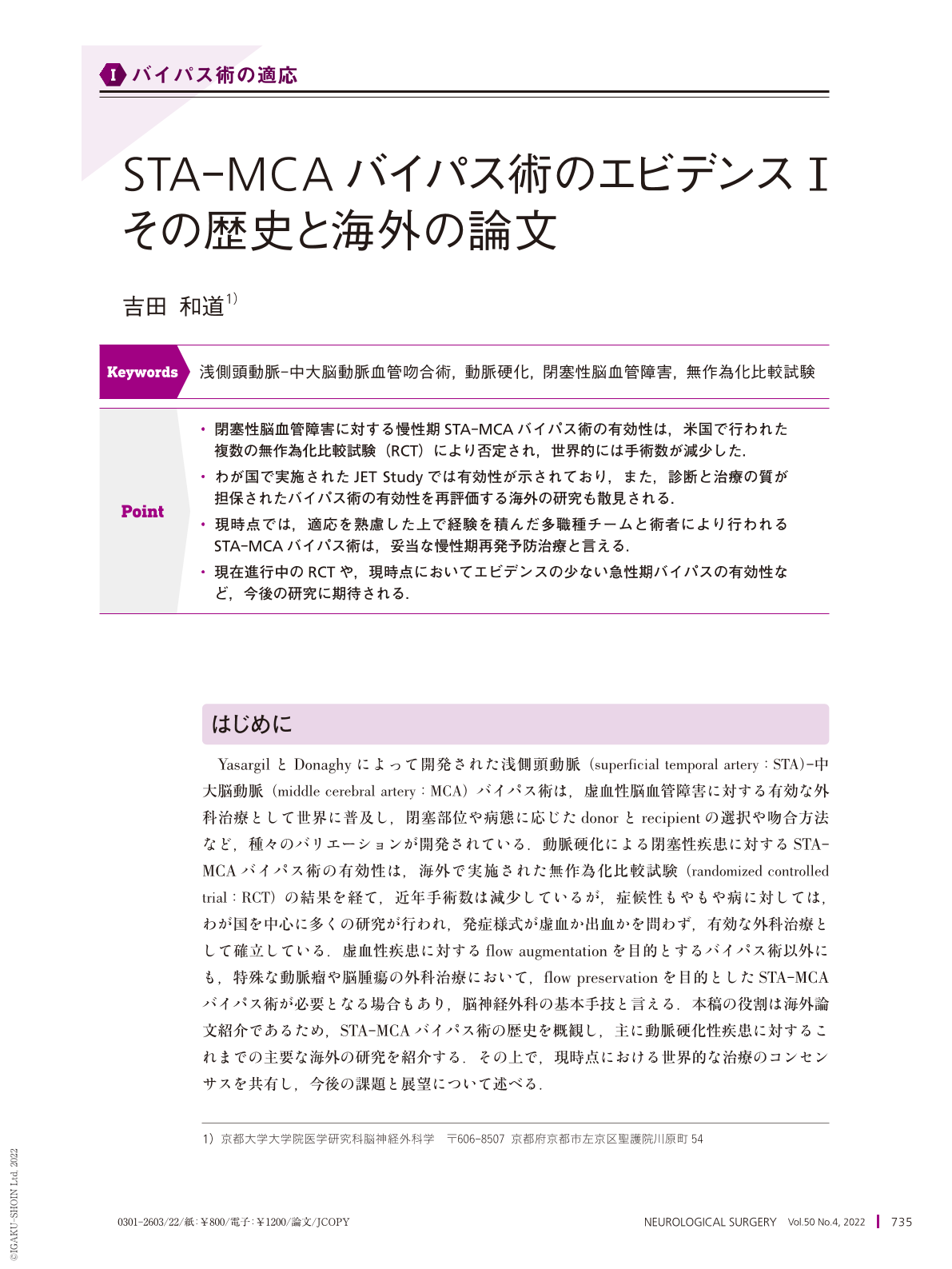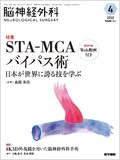Japanese
English
- 有料閲覧
- Abstract 文献概要
- 1ページ目 Look Inside
- 参考文献 Reference
Point
・閉塞性脳血管障害に対する慢性期STA-MCAバイパス術の有効性は,米国で行われた複数の無作為化比較試験(RCT)により否定され,世界的には手術数が減少した.
・わが国で実施されたJET Studyでは有効性が示されており,また,診断と治療の質が担保されたバイパス術の有効性を再評価する海外の研究も散見される.
・現時点では,適応を熟慮した上で経験を積んだ多職種チームと術者により行われるSTA-MCAバイパス術は,妥当な慢性期再発予防治療と言える.
・現在進行中のRCTや,現時点においてエビデンスの少ない急性期バイパスの有効性など,今後の研究に期待される.
The superficial temporal artery to middle cerebral artery(STA-MCA)bypass technique developed by M. Gazi Yaşargil and Raymond M. P. Donaghy in the 1960s was rapidly adopted throughout the world as a procedure for surgical flow augmentation for ischemic cerebrovascular disease(CVD). However, the effectiveness of STA-MCA bypass for atherosclerotic occlusive CVD has not been proven in the extracranial-intracranial(EC-IC)bypass and carotid occlusion surgery studies(COSS), both conducted in the United States. Subsequently, the number of STA-MCA bypasses performed for atherosclerotic CVD decreased globally. In contrast, the Japanese EC-IC Bypass Trial demonstrated the efficacy of STA-MCA bypass for occlusive CVD. The number of research articles reassessing bypass surgery with appropriate indications and high quality of care has recently increased, and carotid and middle cerebral artery occlusion surgery studies designed with careful consideration for several criticisms against COSS are now being conducted in China. This article reviews foreign papers related to STA-MCA bypass for atherosclerotic CVD and describes the current consensus regarding both surgical and medical treatment.

Copyright © 2022, Igaku-Shoin Ltd. All rights reserved.


